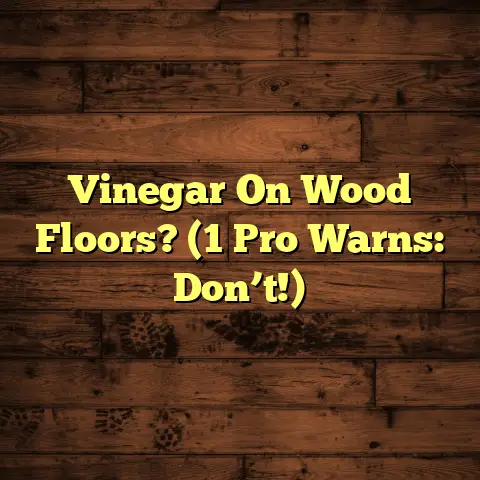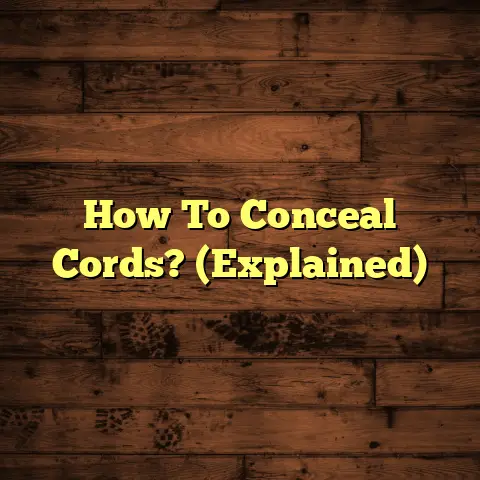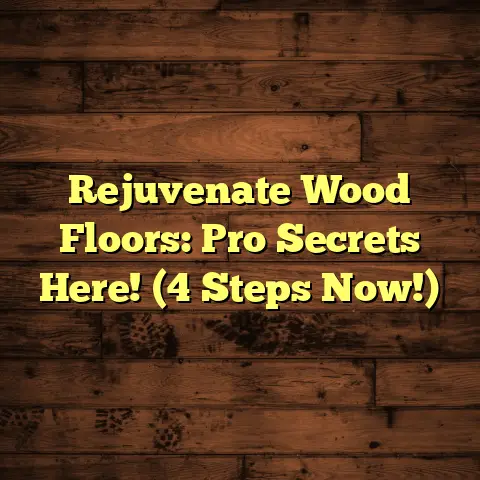Gym Floor Mats: Cost Breakdown (2 Price Traps!)
Have you ever stepped into a gym and wondered why the flooring looks and feels so different from the one in your home workout space?
I’ve been a flooring contractor for over 15 years, and
I can tell you, it’s not just about aesthetics.
Gym flooring,
especially gym floor mats, plays a crucial role in safety,
comfort, and performance.
Let’s dive deep into the world of gym floor mats, exploring their types, costs, and the common pitfalls to avoid when making your purchase.
1. Understanding Gym Floor Mats
So, what exactly are gym floor mats?
Simply put, they’re specialized floor coverings designed for fitness environments.
They’re built to withstand the rigors of exercise, protecting both the subfloor and the people working out.
There’s a wide variety of options available, each with
its own strengths and weaknesses.
Here’s a quick rundown:
Rubber Mats: These are the workhorses of the gym world.
They’re incredibly durable, offer excellent shock absorption, and can handle heavy weights.
You’ll often find them in weight rooms and areas with heavy equipment.Foam Mats: Typically made of EVA foam, these mats are softer and more comfortable than rubber.
They’re great for bodyweight exercises, yoga, and stretching.
However, they’re not as durable and can be easily damaged by heavy weights.Interlocking Tiles: These are versatile and easy to install.
They come in both rubber and foam options, allowing you to customize your flooring based on your needs.
Interlocking tiles are a popular choice for home gyms and smaller fitness studios.Vinyl Mats: These are often used in aerobic studios or dance rooms.
They provide a smooth, resilient surface that’s easy to clean and maintain.
Vinyl mats aren’t as shock-absorbent as rubber or foam, but they offer good traction and durability.
The primary functions of gym floor mats are pretty straightforward:
-
Shock Absorption: Reducing the impact on joints during high-impact exercises.
-
Impact Protection: Protecting the subfloor from damage caused by dropped weights or heavy equipment.
-
Noise Reduction: Minimizing the noise generated by exercise, which is especially important in shared spaces.
-
Slip Resistance: Providing a safe and stable surface to prevent slips and falls.
2. The Importance of Quality in Gym Floor Mats
Now, you might be thinking, “Do I really need to spend extra on high-quality mats?”
The answer is a resounding YES!
Quality matters immensely when it comes to gym floor mats.
It’s not just about aesthetics; it’s about safety,
performance, and longevity.
High-quality mats provide superior shock absorption, reducing the risk of injuries like joint pain, sprains, and stress fractures.
They also enhance workout performance by providing a stable and supportive surface, allowing you to focus on your form and technique.
Think about it this way:
Imagine doing plyometric exercises on a thin, hard surface versus a thick, cushioned mat.
The difference in impact on your knees and ankles is significant.
I’ve seen firsthand the consequences of using low-quality mats.
In one instance, a client of mine purchased cheap foam
mats for his home gym.
Within a few months, the mats were
torn and compressed, providing little to no cushioning.
He ended up developing knee pain and had to replace the mats with a higher-quality rubber option.
Another example involves a commercial gym that opted for budget rubber mats to save money.
The mats quickly deteriorated under heavy use, becoming slippery and uneven.
This led to several accidents, including a client who slipped and fell while lifting weights, resulting in a shoulder injury.
These situations highlight the importance of investing in quality gym floor mats.
While the initial cost may be higher, the long-term benefits in terms of injury prevention, performance enhancement, and durability far outweigh the savings.
3. Cost Breakdown of Gym Floor Mats
Let’s get down to brass tacks: how much do gym floor mats actually cost?
The price range varies widely depending on the type of mat, material, thickness, and brand.
Here’s a general overview:
Foam Mats: These are typically the most affordable option, ranging from $1 to $4 per square foot.
However, keep in mind that they’re not as durable as other options.Rubber Mats: Rubber mats are a mid-range option, costing between $3 to $8 per square foot.
The price depends on the type of rubber (recycled vs.
virgin), thickness, and density.-
Interlocking Tiles: Interlocking tiles can range from $2 to $10 per square foot, depending on the material (foam or rubber) and the quality of the interlocking mechanism.
Vinyl Mats: Vinyl mats are typically more expensive, ranging from $5 to $12 per square foot.
Their higher cost reflects their durability and aesthetic appeal.
Here’s a more detailed breakdown of the factors that influence the cost of gym floor mats:
Material Costs: Rubber is generally more expensive than foam due to its durability and shock absorption properties.
Virgin rubber is more expensive than recycled rubber.-
Thickness and Density Variations: Thicker and denser mats provide better shock absorption and durability, but they also come at a higher price.
Brand Differences: Established brands often charge a premium for their reputation and quality control.
However, there are also many lesser-known brands that offer excellent value for the money.-
Installation Costs: Some types of mats, such as large rubber rolls or vinyl flooring, may require professional installation, which can add to the overall cost.
To give you a better idea of price ranges, here are some examples of popular brands and their approximate prices:
Note: Prices are approximate and may vary depending on the retailer and specific product.
4. Price Trap #1: The Allure of Cheap Mats
We’ve all been there: staring at a product that seems too good to be true, wondering if we should take the plunge.
When it comes to gym floor mats, the allure of cheap options can be strong.
After all, who doesn’t want to save money?
However, opting for budget mats is often a false economy.
While the initial cost may be lower, you’re likely to incur additional costs in the long run.
Here’s why cheap mats can be a bad investment:
Poor Durability: Cheap mats are often made from low-quality materials that break down quickly under heavy use.
They may tear, crack, or compress, requiring frequent replacement.-
Inadequate Shock Absorption: Budget mats may not provide sufficient cushioning, increasing the risk of injuries.
-
Slippery Surface: Some cheap mats have a slippery surface, which can be dangerous during exercise.
-
Off-Gassing: Low-quality foam mats may release harmful chemicals, such as volatile organic compounds (VOCs), into the air.
I remember a gym owner who decided to save money by purchasing cheap foam tiles for his group fitness studio.
Within a few months, the tiles were showing signs of wear and tear, with several of them torn or compressed.
Clients started complaining about discomfort during exercises, and some even reported minor injuries.
The gym owner eventually had to replace the entire flooring with a more durable rubber option, costing him significantly more than if he had invested in quality mats from the start.
Another common scenario involves home gym enthusiasts who purchase cheap rubber mats online.
These mats often have a strong odor and may not be as thick or dense as advertised.
They may also crumble or flake over time, creating a messy and unsafe workout environment.
The bottom line is that cheap mats are often a waste of money.
They may seem like a good deal at first, but they’re likely to cost you more in the long run due to replacement costs, injury treatment, and decreased workout efficiency.
5. Price Trap #2: Overpriced Premium Mats
On the opposite end of the spectrum, we have overpriced premium mats.
These mats often come with a hefty price tag and are marketed as the ultimate solution for all your fitness flooring needs.
While some premium mats are genuinely worth the extra cost, others are simply overpriced due to marketing gimmicks and inflated claims.
So, how do you distinguish between a truly premium mat and an overpriced one?
Here are some factors to consider:
Material Quality: Premium mats are typically made from high-quality materials, such as virgin rubber or high-density foam.
These materials are more durable, shock-absorbent, and resistant to wear and tear.-
Manufacturing Process: Premium mats are often manufactured using advanced techniques that ensure consistent quality and performance.
-
Features and Benefits: Premium mats may offer additional features, such as antimicrobial properties, slip-resistant surfaces, and custom designs.
Warranty: A good warranty is a sign that the manufacturer stands behind their product.
Premium mats often come with longer and more comprehensive warranties.-
Reviews and Testimonials: Look for reviews and testimonials from other customers to see what their experience has been with the mat.
However, be wary of the following marketing tactics that may indicate an overpriced mat:
-
Exaggerated Claims: Be skeptical of claims that sound too good to be true, such as “revolutionary shock absorption” or “indestructible material.”
-
Celebrity Endorsements: Just because a celebrity endorses a product doesn’t mean it’s worth the price.
-
Limited-Time Offers: Pressure tactics, such as limited-time offers, are often used to push sales of overpriced products.
-
Lack of Transparency: If the manufacturer is unwilling to provide detailed information about the materials and manufacturing process, it’s a red flag.
I’ve seen many instances where gym owners and home fitness enthusiasts have been duped into buying overpriced premium mats.
In one case, a gym owner purchased a set of “revolutionary” rubber mats that were marketed as having superior shock absorption.
The mats cost twice as much as comparable options, but the gym owner was convinced that they would provide a better experience for his clients.
However, after a few months of use, the mats started to show signs of wear and tear, and clients complained that they weren’t as comfortable as expected.
The gym owner realized that he had been taken for a ride and that the mats were not worth the premium price.
To avoid falling into the trap of overpriced premium mats, do your research, compare prices, and read reviews before making a purchase.
Focus on the features and benefits that are genuinely important to you and don’t be swayed by marketing hype.
6. Comparative Analysis: Cost vs. Value
Now that we’ve explored the cost breakdown and potential price traps, let’s take a closer look at the cost versus value of different types of gym floor mats.
The key is to find the right balance between price and performance, ensuring that you get the most bang for your buck.
Here’s a comparative analysis of the cost and value of different types of mats:
As you can see, rubber mats offer the best overall value due to their high durability and excellent shock absorption.
They’re a great choice for weightlifting areas and spaces with heavy equipment.
Foam mats are a more affordable option, but they’re not as durable and are best suited for bodyweight exercises and low-impact activities.
Interlocking tiles offer a good balance of cost and versatility, making them a popular choice for home gyms.
Vinyl mats are a good option for aerobics and dance studios, but they’re not as shock-absorbent as rubber or foam.
When assessing the cost-effectiveness of mats, it’s important to consider your specific needs and usage.
For a home gym with light to moderate use, interlocking tiles or mid-range rubber mats may be sufficient.
However, for a commercial gym with heavy use, it’s worth investing in high-quality rubber mats to ensure durability and safety.
Also, consider the potential long-term savings associated with quality mats.
While they may cost more upfront, they’re likely to last longer and require less frequent replacement, saving you money in the long run.
7. Where to Buy Gym Floor Mats
Okay, so you’ve done your research, you know what type of mat you need, and you’re ready to make a purchase.
But where should you buy your gym floor mats?
Here are some reputable retailers and online marketplaces to consider:
Specialty Flooring Stores: These stores specialize in flooring products and offer a wide selection of gym floor mats.
They typically have knowledgeable staff who can provide expert advice.Online Retailers: Online retailers, such as Amazon and Home Depot, offer a vast selection of gym floor mats at competitive prices.
However, it’s important to read reviews and compare prices before making a purchase.Fitness Equipment Suppliers: Some fitness equipment suppliers also sell gym floor mats.
This can be a convenient option if you’re purchasing other equipment for your gym.Local Gym Equipment Dealers: Supporting local businesses is always a good idea.
Local gym equipment dealers can offer personalized service and may be able to provide installation services.
When choosing a retailer, consider the following factors:
-
Warranty Options: Look for retailers that offer good warranty options to protect your investment.
-
Return Policies: Make sure the retailer has a reasonable return policy in case you’re not satisfied with your purchase.
-
Customer Service: Check the retailer’s customer service reputation to ensure that you’ll receive prompt and helpful assistance if you have any questions or concerns.
There are benefits to shopping both locally and online.
Shopping locally allows you to see and feel the mats in person, and you can get expert advice from the staff.
However, online retailers often offer a wider selection and lower prices.
Ultimately, the best option depends on your individual needs and preferences.
8. Conclusion
Investing in gym floor mats is a crucial decision that impacts safety, performance, and the overall workout experience.
I’ve walked you through the different types of mats, their costs, and the potential pitfalls to avoid.
Remember, the allure of cheap mats can lead to long-term problems, while overpriced premium mats may not deliver the promised value.
The key is to find the right balance between cost and value, considering your specific needs and usage.
By making an informed decision, you can ensure that you get the best possible flooring solution for your gym, protecting your investment and enhancing your workouts for years to come.
Don’t underestimate the long-term savings associated with quality mats.
They’ll last longer, require less frequent replacement, and help prevent injuries, ultimately saving you money and headaches in the long run.
So, take your time, do your research, and choose wisely.
Your body (and your wallet) will thank you for it!





